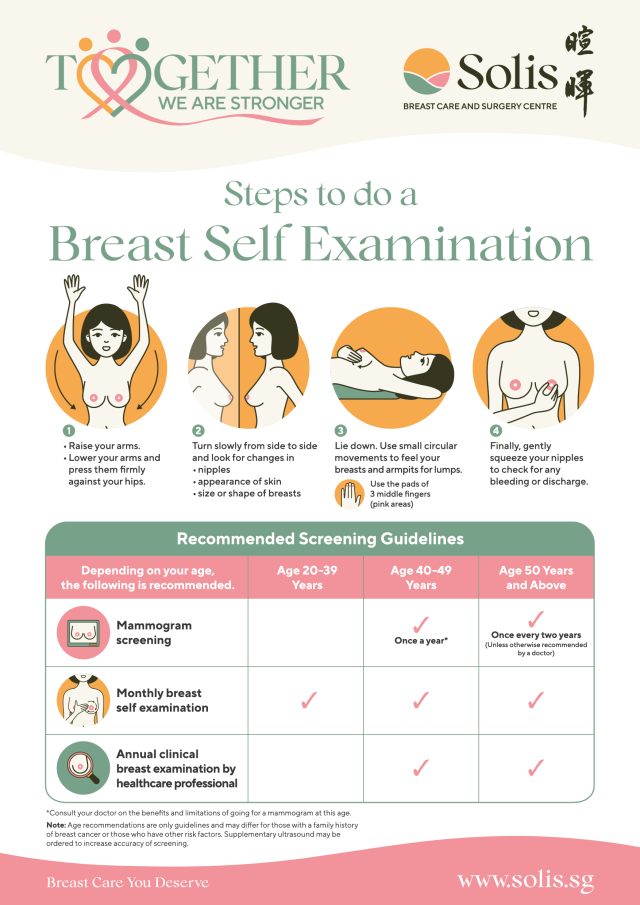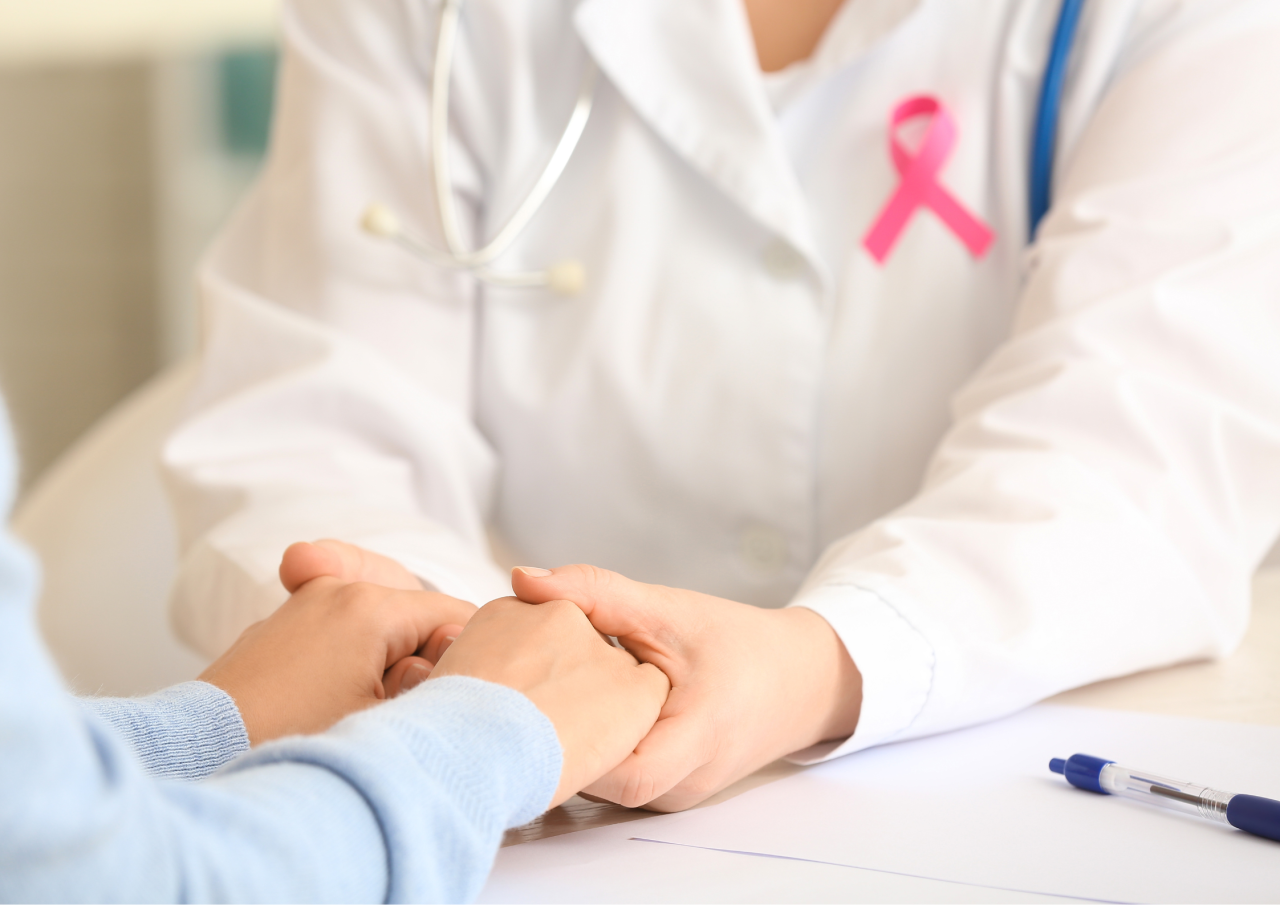Not all lumps that are discovered during routine breast self-examination or screenings are cancerous. Often, many lumps are not.
Dr Lim Siew Kuan, Senior Breast Consultant & Surgeon at Solis answers some questions on benign breast lumps, including the types, diagnoses and treatments.
Q.What are breast lumps, and how common are they?
Breast lumps refer to an area of swelling or firmness in the breast that feels different from the rest of the breast. They are the second most common breast symptom that patients present to GP clinics with breast pain being the first. Most lumps are benign (80%) and benign breast conditions affect around 8% of women.
Q.What are some common types of benign breast lumps among Singapore women?
- Fibrocystic change: this is the most common type of benign breast lump. Many women feel that their breasts are generally lumpy and rubbery. This is due to a benign condition consisting of fibrous and cystic changes in the breasts.
- Breast cysts: Breast cysts are fluid-filled sacs and are not harmful. They tend to change in size, position and numbers according to a woman’s monthly hormonal cycles. However, attention should be paid whenever there is a solid component observed within the cysts. Histological correlation may be required as these solid-cystic lesions have a 10% risk of cancer.
- Fibroadenomas: A fibroadenoma is a mobile and smooth lump with a rubbery feel. It is termed a ‘breast mouse’ as it slips away easily from the fingers during palpation. Fibroadenoma breast lumps are formed by fibrous and glandular tissue and do not give any cancer risk.
Q.Why do some women get benign breast lumps?
As the breasts go through monthly hormonal cycles, the tissues change in response. Some women may be prone to ‘overgrowth’ of benign tissue, giving rise to the above-mentioned conditions.
Q.Which groups of women tend to be more prone to getting such benign breast lumps? Why?
In premenopausal women, their breasts go through cyclical hormonal changes. Breast lumps also tend to be familial and you may be more prone if your sister or mother has (had) the same condition.
Q.How are breast lumps diagnosed?
The diagnosis of breast lumps are done during clinical examination and imaging (ultrasound, with mammogram if > 40 years of age). If both clinical examination and imaging show any indeterminate features, a biopsy will be required for histological correlation.
Q.What are the treatment options for breast lumps? Can they be treated non-surgically or is surgery always needed?
Most benign breast lumps do not require any treatment. Treatment is required when the breast lumps cause pain or if the nature of the lump is uncertain (e.g. lump increasing in size or if it has concerning features on imaging).
Q.Can breast lumps recur after treatment? When might they recur?
Yes, as long as the cyclical hormonal changes are still happening, benign breast lumps can recur, either in same or different sites.
Q.Some questions on breast self-examination:
- Is it advisable to do breast self-examinations, and why? Yes, conducting self-examination encourages awareness of one’s own breasts, so that any new findings can be flagged up earlier by the woman.

- How frequently should this be done? Once a month
- When is it a good time to do a self-examination? Breast self-examination should be conducted on day 7-10 of your menstrual cycle, when the breasts are least lumpy and sensitive
- What to look out for during the self-examination? Keep a look out for new lumps/firm areas, breast asymmetry, skin changes, nipple discharge
Article contributed and reviewed by Dr Lim Siew Kuan, Senior Consultant and Breast Surgeon at Solis Breast Care & Surgery




